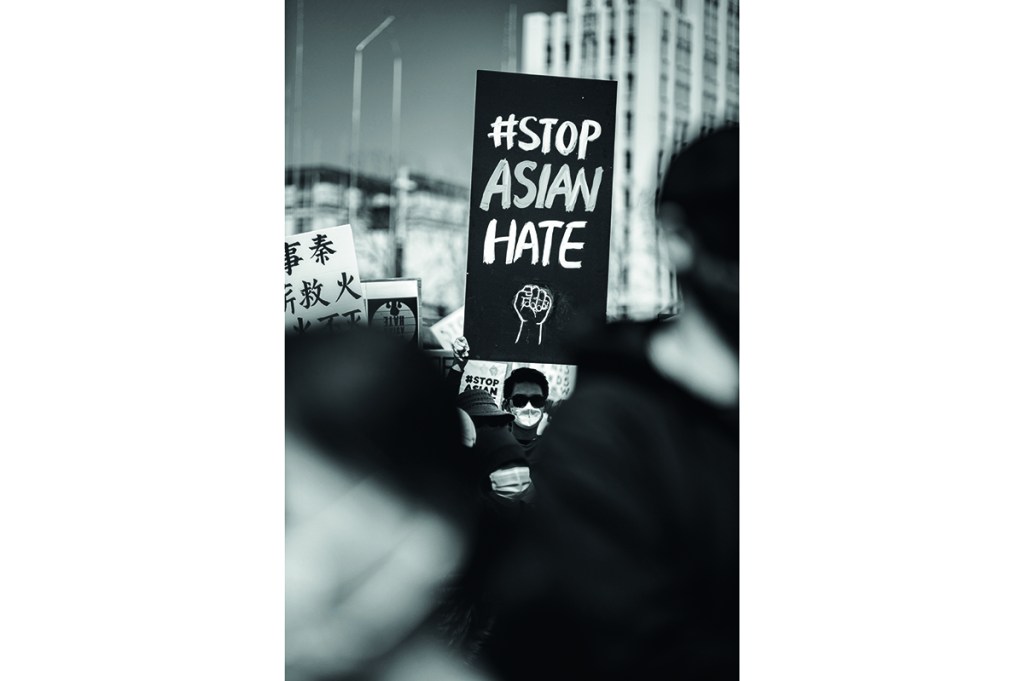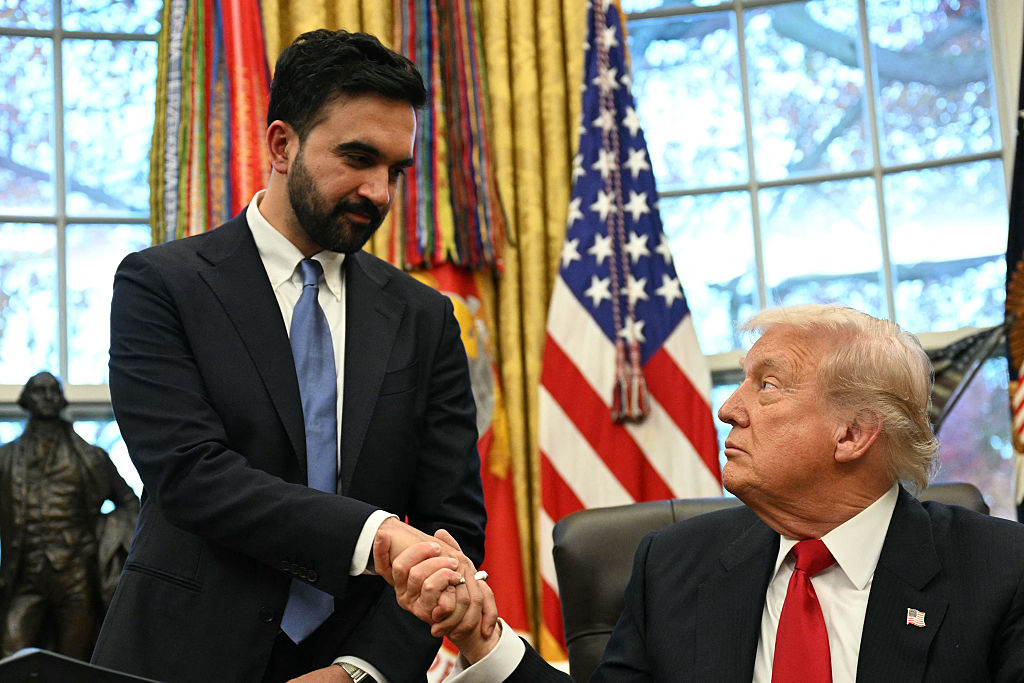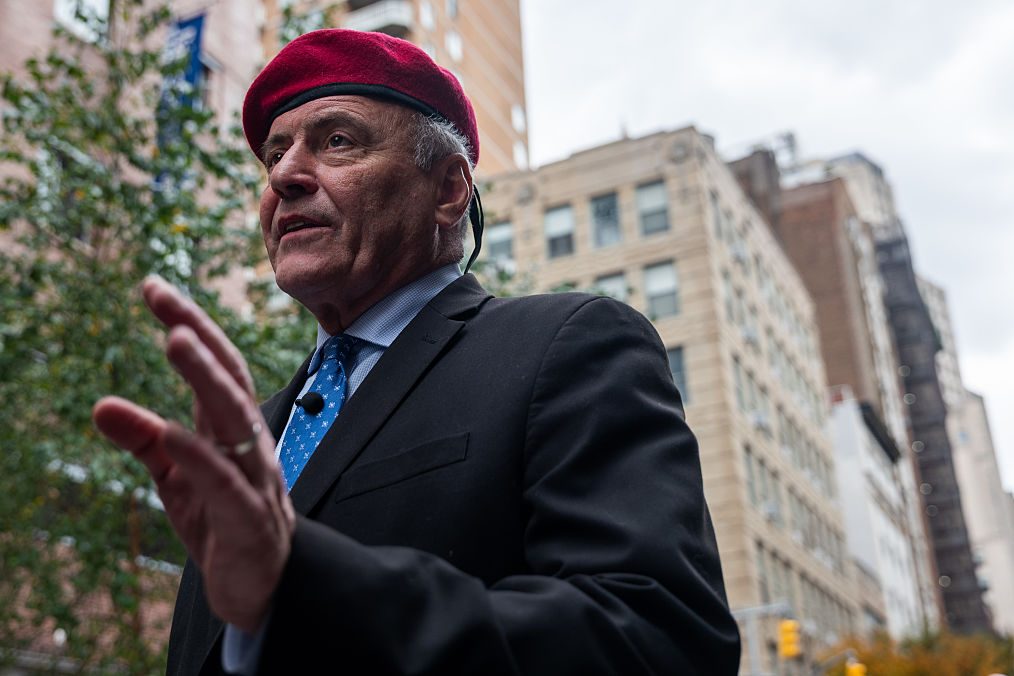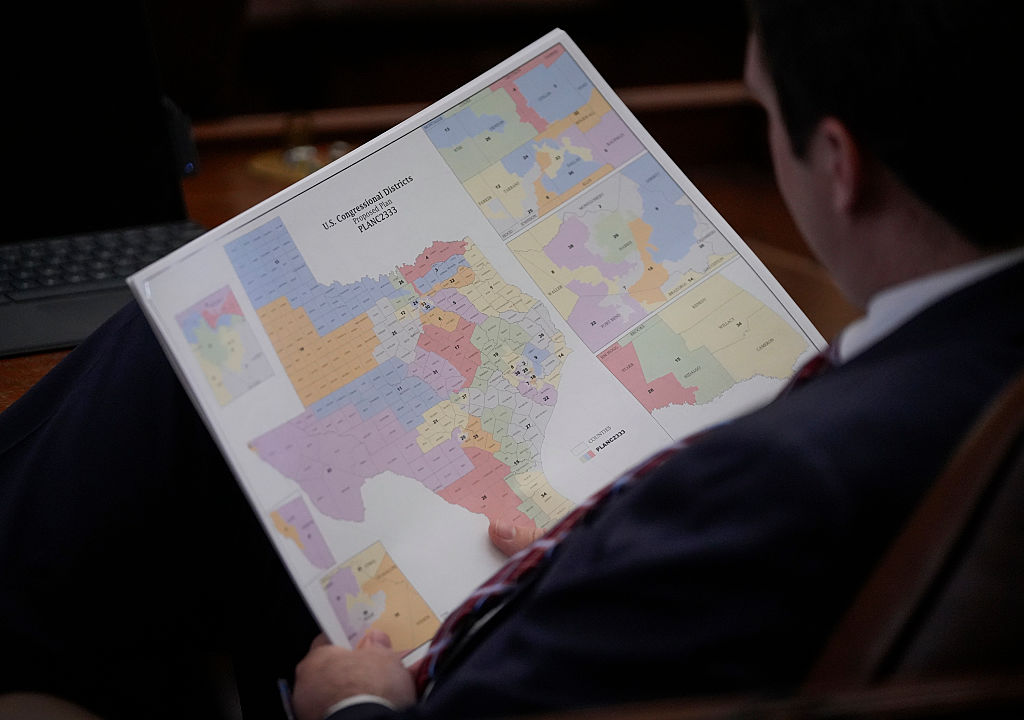Last spring, Yiatin Chu joined a series of protests against the spike in unprovoked assaults on Asian Americans in New York City. Prominent New York Democrats, including Senate majority leader Chuck Schumer, were in attendance and spoke at the rallies. Senior party figures expressed their solidarity with the Asian community. They drew connections between the violence on New York’s streets and the xenophobic language of former president Donald Trump. And sometimes they blamed the violence on something less specific: white supremacy.
After a while, Chu, a politically active Democrat, stopped going to the protests. “I was just really turned off by the messaging,” she tells me. The story being told on stage seemed politically convenient, but it was at odds with her understanding of the nature of the attacks — including the race of many of the perpetrators. “I realized that this was the party line,” she explains. “I was really angry at what was happening, and it was heartbreaking to see the news, but I no longer wanted to participate. I felt like it was being used to drive political messaging for a party, and not doing real work to change a situation.”
Chu isn’t the only Asian-American New Yorker frustrated by the Democratic Party. Indeed, if Democrats thought that expressing sympathy and condemning white supremacy would shore up the Asian-American vote in the pandemic era, they would soon be disappointed. Beneath the surface of New York’s foregone conclusion of a mayoral race last November, something surprising happened: the city’s Asian-American neighborhoods swung rightward. From Manhattan’s Chinatown to Flushing, Queens, and Bensonhurst, Brooklyn, Asian Americans — who account for around 15 percent of the city’s population — defied expectations and voted Republican in greater numbers than they had before.
Curtis Sliwa, the Guardian Angel vigilante leader turned Republican mayoral candidate, won just 29 percent of the vote citywide. He carried 40 percent of the vote in majority white areas, 20 percent in majority-Hispanic precincts and 6 percent in majority-black precincts. But in precincts where more than half the voters are Asian, Sliwa notched up 44 percent of the vote. According to analysis by The City, he beat Democrat Eric Adams in 137 of the city’s 317 majority-Asian precincts. In 2017, the Democrat Bill de Blasio won 67 percent of the vote to Republican Nicole Malliotakis’s 33 percent in precincts where Asian Americans make up at least 75 percent of the electorate. Four years later, Adams beat Sliwa 60 percent to 40 percent in those areas: a fourteen-point swing toward the GOP.
The results set off alarm bells for Democrats. “Our party better start giving more of a shit about #aapi voters and communities,” tweeted Grace Meng, a congresswoman whose district includes many predominantly Asian neighborhoods in Queens.
The story of New York’s Asian-American voters’ rightward turn starts in 2018 with Bill de Blasio’s announcement of plans to scrap the standardized tests used for admissions at the city’s specialized public schools. To de Blasio and his progressive allies, this was a fight to diversify world-class schools, such as Bronx Science and Stuyvesant High, that have been powerful engines of upward mobility. But de Blasio’s characterization of the schools as a “rich-get-richer phenomenon” belied how many students are from working- and middle-class immigrant families. And de Blasio omitted an awkward fact from his attack on what his school chief described as a “segregated” system: a majority of the students at these high schools aren’t white, they’re Asian.
Parents, many of them Asian, soon organized campaigns to fight de Blasio’s proposal. It became a galvanizing battle for a community that has generally taken a back seat in state- and city-level political rows. Yifang Cheng, a Brooklyn parent who now votes Republican, says she hadn’t been involved in politics at all before the standardized testing row. “That’s an anti-Asian crime to me,” she says of de Blasio’s proposal. “Because of my race, I’m being singled out. Because of their race, my kids are being singled out.”
“I feel strongly that if Asians are not involved, they will just get neglected more and more and get sidelined more and more,” says Phil Wong. An immigrant from Hong Kong, Wong was one of many parents jolted into action by the school fight. A few years later, he finds politics taking up more and more of his time. He runs the New York branch of the Chinese American Citizens Alliance. He helped Andrew Yang during the Democratic primary, but then switched to work with the Republican campaign during the general election. “Historically Asians, at least Asian parents, are more interested in making a living and getting their kids through education than politics,” he says. “But what we see is the dismantling of the education system and the parts of it that work. We have great schools. Schools that work really well. And they are just dismantling it. That is wrong. And that is why Asians are coming out by the thousands to volunteer, to campaign, to donate and to change the landscape.”
When the Covid pandemic arrived, parents’ groups established to fight the abolition of standardized testing found themselves battling to reopen schools. Meanwhile, small business owners’ warnings about the cost to their livelihoods of onerous public health regulations went unheeded. The city’s leadership backed calls to defund the police even as violent crime was on the rise, and Democrats crowbarred brutally violent anti-Asian assaults into a monochromatic progressive narrative about white supremacy. There is a smattering of other local issues, too: Chinatown residents are distraught by a plan to build a large new jail in the neighborhood. In Brooklyn and Queens, Asian areas have been chosen as the sites of new homeless shelters.
The concerns of Asian Americans in New York — crime, safety, education and entrepreneurship — are important in themselves. But what makes them such a threat to the Democratic Party is that their cumulative effect is greater than the sum of their parts. Taken together, they make clear the size of the gap between the party’s rhetorical affiliation with the Asian-American community and its unresponsiveness to the concerns of Asian-American voters. In the quest to turn American public life into a battle between oppressor and oppressed, the country’s fastest growing demographic group occupies awkward territory. And, as in the standardized testing row, the left often seems happy to write off one group of non-white Americans as collateral damage to advance the interests of others.
The electoral swing in New York is all the more striking given the campaign waged by Adams. A one-time Republican, he focused on law and order, promised a tough-on-crime mayoralty and, when it came to education, sided with the parents opposed to his predecessor’s reforms. Yet he still performed worse among Asian Americans than the out-and-out progressive de Blasio did four years earlier.
Amy Tse, a Democrat increasingly exasperated at her own party’s seeming refusal to listen to Asian-American voters, says that people “didn’t trust Eric Adams as a Democrat because they didn’t trust that the Democratic Party wouldn’t push him toward something they don’t want. They didn’t trust that he would keep his promises.” Early signs suggest that skepticism about Adams’s ability to rein in his party was well-placed. Take newly elected Manhattan District Attorney Alvin Bragg, who has pledged to pursue a terrifyingly lax prosecutorial strategy. And add to the list of complaints Adams’s recent decision to grant the vote in city elections to non-US citizens. Phil Wong is part of a lawsuit to block the measure. A fellow plaintiff, Staten Island borough president Vito Fossella, calls Adams’s decision “an insult to every immigrant who has followed the law, taken citizenship classes and swore an oath to our nation.”
The signs that Asian-American voters are moving right are not limited to New York. Education was a decisive issue in Virginia’s off-cycle gubernatorial election: the much-discussed question of Critical Race Theory, and changes to the entrance criteria for Thomas Jefferson High School, a majority-Asian science and technology magnet school in Fairfax County, were big issues in the state’s densely populated northern areas. There is some evidence to suggest that heavily Asian-American neighborhoods of Northern Virginia swung further toward Republican candidate Glenn Youngkin than the rest of the region. In 2020, Republicans showed signs of a resurgence in Orange County, California, where 20 percent of the population is Asian. Two Asian-American women, Young Kim and Michelle Steele, beat Democratic incumbents to reclaim House seats in what was once a Republican stronghold.
Asian-American voters across the country may not have moved to the right in as striking a fashion as Hispanics did in 2020: Biden captured 61 percent of the Asian vote in the general election. But it’s not hard to see why Republicans are so excited about the shaky-seeming foundations of Asian-American support for the Democratic Party. Between 2000 and 2019, America’s Asian population increased by 81 percent, from 10.5 million to just under 19 million. Between 2016 and 2020, turnout among Asian-American voters increased more than for any other demographic group.
In The Loneliest Americans, a new collection of essays on Asian-American identity, the writer Jay Caspian Kang, the son of Korean parents, considers the political choices Asian Americans face: “When I consider the actual impact of the pandemic on the broader Asian American community — skyrocketing unemployment and the destruction of small businesses in the restaurant, food supply and nail and beauty salon industries — I wonder which Asian America will appeal to the millions of immigrants who are facing an uncertain economic future: the identity neuroses of the wealthy or the rightwing version that valorizes hard work, equal opportunity, and law and order.”
The question answers itself. Republican strategists will surely take heart from the fact that, not so long ago, Asian Americans were reliably Republican voters. That changed in the Nineties, but it could change again. In New York, Republicans are courting Asian voters more seriously than they would have done only a few years ago. Activists report a level of attention that they aren’t used to. Curtis Sliwa was handing out Chinese-language flyers in Flushing. Lee Zeldin, a Republican gubernatorial candidate and congressman for a Long Island district, is busy forging close links with Asian voters in the city and its inner suburbs.
If the rightward shift among Asian Americans represents more than short-term, pandemic-era frustration with the Democratic Party, 2021 could be remembered alongside 1965 as a high-profile New York mayoral race that was a sign of things to come — not just in America’s largest city, but across the country. In 1965, William F. Buckley, the editor of National Review, ran as a seemingly hopeless conservative candidate against the liberal Republican John Lindsay and the Democratic incumbent Abe Beame. Asked what he’d do if he won, Buckley famously responded, “Demand a recount!” In the end, Buckley assembled an unlikely coalition of voters and won 13 percent of the vote, demonstrating that working-class Catholics and ethnic whites in New York’s outer boroughs should not be written off as unwaveringly Democratic. Buckley’s coalition hinted at the “emerging Republican majority” that Richard Nixon would seize on three years later in the 1968 elections.
Some analysts speculate that today’s Hispanic voters are on a similar trajectory, shedding their Democratic loyalties just as Italian and Irish Americans did half a century ago. If something similar happens among Asian Americans, the Democratic voter coalition will start to look very shaky indeed. Whether Republicans can capitalize on this shift depends on what both parties do next. In New York, it depends foremost on whether the Democrats actually deliver on their promises to turn the city around after Covid, get a handle on violent crime and preserve a meritocratic school system.
A few weeks after our first conversation, Yiatin Chu, the campaigner who told me she had stopped going to anti-hate rallies, sent me a link to a news story about the death of another Asian New Yorker. Forty-year-old Michelle Alyssa Go died after a deranged homeless man pushed her in front of an oncoming subway train in Times Square station. “The same Democratic talking points won’t work,” said Chu.
This article was originally published in The Spectator’s March 2022 World edition.

























